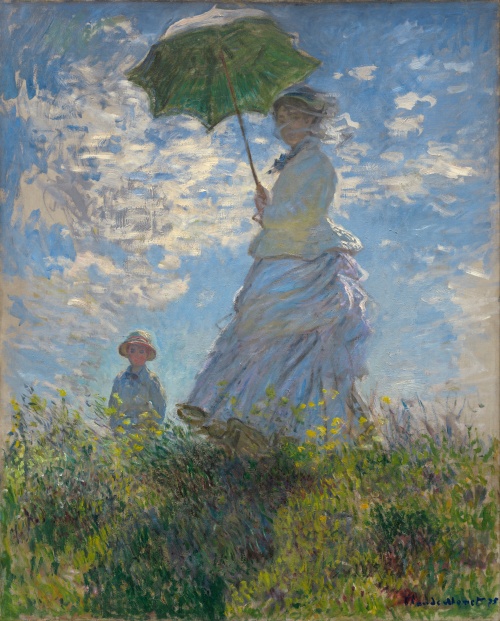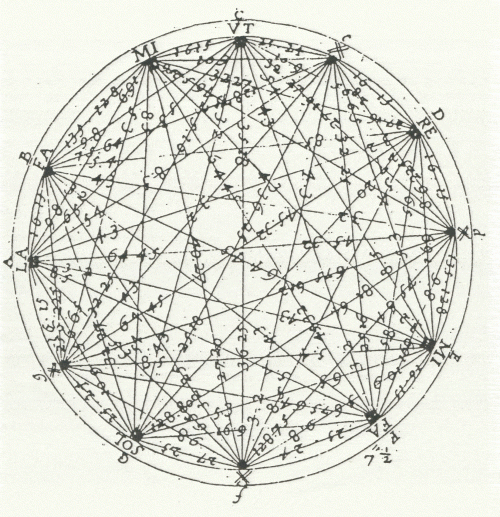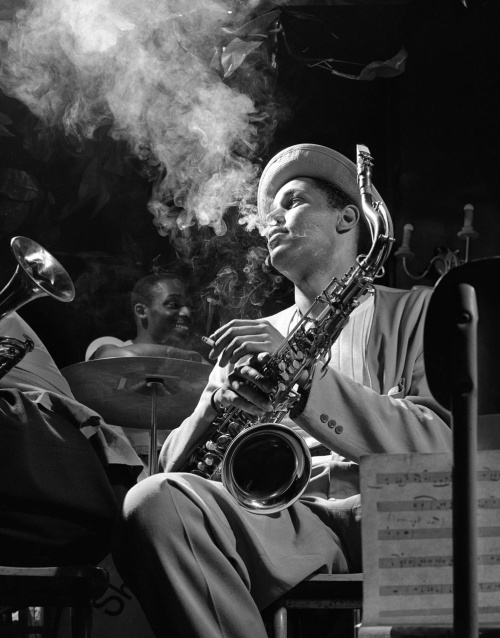Hearing Modernity: The Music of the 20th Century
The following essay was written for my class, “20th Century Music.” In it, I compare and contrast a number of 20th Century genres. I will provide links for each genre throughout the essay.
Impressionism, Primitivism, and Expressionism, were all musical innovations that developed during the 20th Century. But why? For one, many European composers were eager for progress. Tonal music dominated Europe for 300 years and composers like Stravinsky, Webern, & Debussy were excited to try something new. In the Americas, the abolition of slavery made it possible for African Americans to cultivate their cultural identity as free men and women. Black Americans had greater exposure to many different styles of music. That exposure resulted in some of the most innovative & exciting sounds of the 20th Century.
Although Sergei Rachmaninoff’s “Prelude in G Minor” was written in 1901, Sergei was reluctant to embrace the avant-garde styles that were brewing throughout Europe. The title alone, “Prelude in G Minor,” indicates that this was written in a minor key. You can really hear the transition from minor tonality (when the piece begins,) to major tonality at the 0:10 mark when the pianist aggressively strikes the major chord. The contrast between major & minor tonality, help to foster captivating music that tells a story. The pianist gradually transitions to playing beautiful, languid, and expressive phrases at 1:18 and slowly builds back up to the main theme of bouncy, robust chords that make this music unforgettable.
Impressionistic music, is without question, my favorite classical style of the 20th Century. Ravel’s “Jeux d’eau” is the perfect example of why this is true. When the composition starts, you’re immediately overwhelmed with a flurry of rapid, beautiful notes. It’s akin to watching a group of butterflies circle around a bouquet of flowers. Instead of using major or minor scales, Ravel & many other Impressionists, prefered the whole tone scale. This scale, especially if it’s used frequently, gives the music a circular feel. In other words, it doesn’t sound like “Jeux d’eau” has an ending. The closest thing to an “ending,” is when the main theme at 0:00 transitions into a different set of musical ideas at 0:34, yet it still maintains a circular feel throughout the entire piece.
Primitivism, was in a sense, a reaction against modernity. The artists in this school were influenced by non-western and pre-technological cultures throughout the world. Stravinsky’s “Rite of Spring” is a good example of what an African tribal mask might “sound” like. This music contains many elements that contribute to it’s jarring & primitive character. Stravinsky organized the music in such a way, that musical sections quickly move from one to the other, with little or no transition between the sections. The contrast between the slow, brooding melody that begins at 3:35, to the loud, eerie, thumping section at 4:15 is astonishing. At 6:05, the syncopation really takes off, the beating drums coupled with an extremely dissonant string section, help to create an intense, savage atmosphere throughout the piece.
The Hungarian composer Béla Bartók also wrote music in the Primitive style & his piece, “The Miraculous Mandarin” is a good representation of this genre. At the very beginning of this composition, the string section is playing so fast, it sounds like a swarm of bees are circling around your head. At the 0:25 mark, you can begin to hear the haunting, dark, folk melody, which continues throughout the excerpt, only getting louder and more intense every second. This melody reminds me of music from an ancient culture that’s long passed, yet it’s fused with such high levels of dissonance, the music is elevated to something truly unique.
Anton Webern’s “Three Little Pieces” exemplifies what the Expressionist school was all about. The goal of Expressionism was to express the hidden psychological torment of the subconscious mind. Within just a few seconds of the first movement (1:28,) one is transported to a surreal, eerie world. The screeching cello & unresolved notes played on the piano, pose the listener with a musical question that never gets answered. Webern pulls you into the world of the tormented subconscious at 2:28. The violent, dissonant chords paired with horrific pitches from the cellist create a nightmarish atmosphere!
Webern’s creative output was not limited to one style. Twenty two years after writing “Three Little Pieces,” he composed “Variations for the Piano,” which was written in the 12 Tone style. As the name suggests, there are 12 pitches arranged in a very precise, mathematical order. The first movement has a random, and almost playful dimension. Movement #2 doesn’t seem to have any direction at all, it’s a series of notes being played one after another with no discernible melody or rhythmic pulse. I guess this is what you can expect from music that was composed by a grid system.
Rachmaninoff’s “Prelude in G Minor” & Ravel’s “Jeux d’eau,” are both beautiful pieces of music, but they do have different characteristics. “Prelude in G Minor,” because it’s written in a tonal style, tells a very clear musical story. There’s a beginning, middle, and closing section of the music. The percussive chords that are played at the beginning of the composition, slowly wind down to calmer, longer notes, only to return to a repeated phrase that you heard at the beginning of the piece. “Jeux d’eau,” doesn’t sound like it’s telling you a story. Instead, it repeats circular, whole tone scales one after another. It does a great job of making musical impressions, using dynamic colors, and beautiful melodies.
Stravinsky’s “Sacrificial Dance” & Bartók’s “Miraculous Mandarin,” would seem like they would share many of the same characteristics, given the fact that they’re both written in the same style. With that said, I would argue that these particular excerpts differ significantly. Although both pieces pile on massive levels of dissonance, Bartók’s piece is much less shocking. It lacks the strong accents & syncopated rhythms that are so prevalent in the “Sacrificial Dance.”
As I mentioned earlier, Webern was fortunate to contribute to the Expressionist & 12 Tone movements in classical music. Based on the objectives of both of these styles, it would be safe to conclude that they would sound very different from one another. Expressionism explores the psychological torment of the subconscious mind, while 12 Tone music was created by arranging a series of 12 notes with the help of a grid. Both styles are fairly sparse, but “Three Little Pieces” sounds and feels intentional. There’s a strong, emotional message that Webern in trying to convey to the listener. “Variation for Piano,” however, lacks those emotional qualities. It’s more theoretical, mathematical, and lifeless.
Scott Joplin’s “The Entertainer,” B.B. King’s “Blues Improvisation,” & Duke Ellington’s “Mood Indigo” all share one thing in common, all three of these genres were created by African-Americans. Thus, the West African tradition of “call & response,” which was brought to America by African slaves, was never abandoned at the birth of a new musical innovation. Joplin’s “The Entertainer,” does differ from the other two examples, however. As exciting as “The Entertainer,” sounds, there was no improvisation in that style of music. This differs from “Mood Indigo,” which features three improvised solos, as well as B.B. King’s blues piece which was also improvised.
The influence that jazz and the blues once had on popular music has slowly disappeared over the years. I’m very young, and I don’t listen to much pop music, but when I do hear some (usually against my will,) I don’t hear anything that reminds me of jazz or the blues at all. Brian Setzer had a hit record in the 1990’s called “Jump Jive An’ Wail” with his swing revival band. When’s the last time you heard something like that on the radio?
There are dozens of musical innovations that took place during the 20th Century, but I only covered eight of them. There’s great diversity among these styles, on so many levels. For example, I don’t think that the development of the blues was a response to impressionist music in France. However, Webern’s atonal music was clearly a deviation from the tonal tradition that dominated Europe for 300 years. If there’s one thread that links all eight of these styles together, it’s this, they were all new. There was nothing like the “Rite of Spring” before the “Rite of Spring.” Even if new music is absolutely terrible, if it’s different, it’s hard to forget it.



![Edvard Munch - "The Scream" [Detail] (1893)](https://kareemonelson.files.wordpress.com/2014/12/scream.jpg?w=500&h=324)

